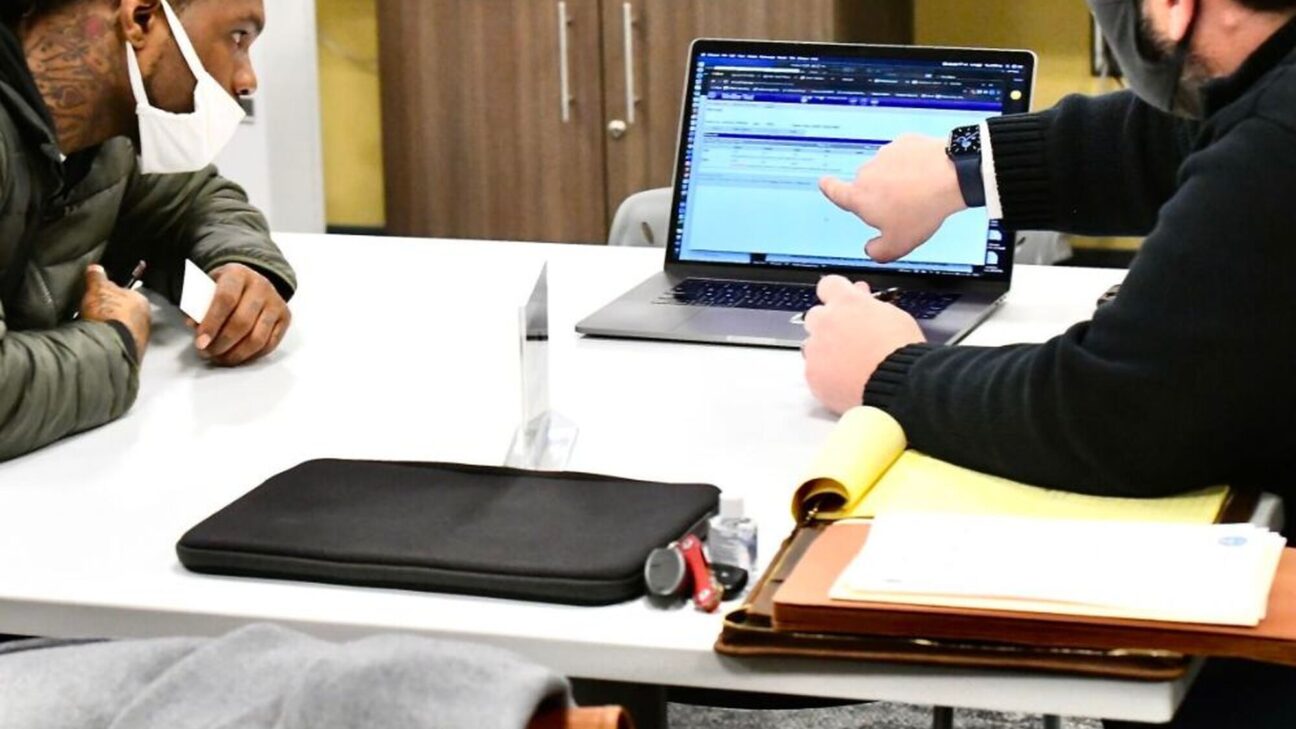Jail review teams are an innovative strategy for jurisdictions looking to improve pretrial justice. The teams use a collaborative approach to look regularly at their jail population, review individual cases, and ensure that people who are eligible and suitable for release return to the community. APPR spoke with Liz Hassett, from Pennington County, South Dakota, about her jurisdiction’s approach to reviewing their jail population.
Liz coordinates the John D. and Catherine T. MacArthur Foundation’s Safety and Justice Challenge grants in Pennington County. Retired Milwaukee County Chief Circuit Court Judge Jeffrey Kremers spoke with Liz about Pennington County’s jail review process.
Judge Kremers: What is your role in monitoring the jail population?
Liz Hassett: I keep track of the jail’s population daily and do a monthly analysis of statistics to track how we’re doing. I compile data to identify how many people are released and for how many cases we recommend expediting case processing, like moving up a court hearing or fixing paperwork issues. Our goal is to reduce the jail population by 22 percent, which would mean an average daily jail population of 280.
Judge Kremers: What is the process for the initial release determination in Pennington County?
Liz Hassett: If there are new charges and not something like a warrant or a probation violation, the Public Safety Assessment (PSA) is done at the point of booking to support an immediate release decision. About 40 percent of people assessed at booking are released on personal recognizance (PR, also called release on recognizance). We did that to replace a monetary bond schedule. Now people eligible for release based on their PSA scores are PR-released and are given a court hearing within two weeks. Although we don’t know what the percentage of releases used to be, we know anecdotally that this process has increased PR release of people arrested on low-level nonviolent charges.
For those who remain in jail, initial appearances happen every business day, when a judge reviews each case and can decide on a PR or monetary bond release, issue a protection order, or release someone on an alternative to incarceration (ATI) program.
We also have weekend review magistrate judges, who review cases of people held on Friday or over the weekend. The weekend review judge uses this thinking process to make a decision: If I were seeing this person on Monday, would I give them a PR? Can I get them out of jail earlier versus having them stay in jail all weekend and releasing them on Monday? We have quite a few people who are released this way.

Judge Kremers: Is there a review process for people who are still in custody at the initial appearance hearing or afterward?
Liz Hassett: In March 2019, we implemented a jail review team, which consists of a coordinator and one representative from each of the state’s attorney’s office, the public defender’s office, and probation. The team reviews cases of people still in custody after the initial appearance hearing. The coordinator compiles a list of people who are eligible for release or may have some issues with their case—maybe there’s a need for case expedition. The team reviews, or “staffs,” a list of about 20 people every week. A recommendation is made for release to an ATI, a reduction in the bond amount, or something similar. Then it goes to the judge, who decides whether it’s approved or not.
Judge Kremers: How does the recommendation get to the judge?
Liz Hassett: The coordinator compiles the paperwork and the team’s recommendation, and then places the information in a pink folder so judges see it and know it is a priority. After their review, judges place their recommendation in the pretrial mailbox and the coordinator processes it. If the person’s release is approved, the paperwork goes to the jail. If not, the judge’s denial is sent to the person’s defense attorney and the jail review team representatives.
Through that review, we were able to reduce the jail population by 40 to 50 percent because the judges knew the review team was looking at all the relevant factors to identify those who were eligible for release and wouldn’t create community safety issues.
Liz Hassett, Pennington County, South Dakota
Judge Kremers: Why did you establish the jail review team?
Liz Hassett: The jail review team is extremely important. It asks, are we ensuring due process for people sitting in jail? Have they been in jail longer than the sentence they would have served? What do we need to do differently? Information is power. We’re able to bring those situations to the attention of the state’s attorney, the defense attorney, and the judge.
Initially, the jail review team met every other week. But when COVID-19 began spreading in Rapid City, the team met almost daily to review people who could potentially be released. Through that review, we were able to reduce the jail population by 40 to 50 percent because the judges knew the review team was looking at all the relevant factors to identify those who were eligible for release and wouldn’t create community safety issues. The process was a little more thoughtful. We’re still struggling with COVID, so the team has been meeting once a week and we plan to continue that probably through 2022.
Judge Kremers: What data do you use to generate the list of cases you’re going to review?
Liz Hassett: The jail commander worked with the IT department to create a stand-alone program, so you could search among people held in custody using certain parameters and download that list to a spreadsheet. The jail review coordinator compiles and sorts that list, and sees who’s been in jail the longest—for instance, people with low bond amounts. We had people remaining in jail on $50 cash or surety[a]. We also look for those who have multiple cases in front of multiple judges. We’re seeing a lot of cases where someone has a hearing in circuit court and a hearing in magistrate court, and the judge on the felony side has granted a PR, but there’s still a bond amount on the misdemeanor side. The defense attorney or the state’s attorney might catch that, but they don’t have the bandwidth to look through every single case file. Unfortunately, sometimes cases fall through the cracks.
Judge Kremers: Are there some defining characteristics you see in people who just aren’t able to get out—or those who are able to get out?
Liz Hassett: Good question. I don’t think we have looked into the case type, charge type, or situation type enough to be able to pinpoint that. But with some of the more violent situations and cases, the appetite for release is just not there. We do have the capability of releasing people on an electronic monitor and giving them an exclusion or inclusion zone; we’re trying to safely release some of those folks.
Judge Kremers: What is your plan to sustain the jail review team?
Liz Hassett: In 2020, the jail review coordinator went from grant funding to county funding, to make sure it’s a sustainable position. This is something we need to continue, something that works, something we need to keep around.
In the past, we really had no mechanism other than happenstance for noticing a situation with someone in jail longer than they should have been—or case expedition issues. Now we’re doing this as a team, with all the key stakeholders at the table. And everybody on the staffing team knows that if one person or one entity says no, then it’s a no. When the judges receive the team’s recommendation, they know that everybody had all the information at hand to make the recommendation and is in agreement. The process also creates an opportunity for oversight; there’s always an option to bring the judge to the table and say, “We have this situation, this issue, this struggle. How do we remedy this?”
This is something we need to continue, something that works, something we need to keep around.
Liz Hassett
Judge Kremers: Do you anticipate any future modifications of this process?
Liz Hassett: We’re interested in adding to the team a person with lived experience—someone who has been in jail. And we’d like to write a procedure manual, a process manual, and a training manual for new judges, new state’s attorneys, and new defense attorneys.
Judge Kremers: How do you incorporate the voice of victims/survivors into this process?
Liz Hassett: If there’s a recommendation for release, the victim advocate with the state’s attorney’s office reaches out to the alleged victim, and asks if there are any concerns about release—and if there are, that case is typically reviewed again.
Judge Kremers: Do you believe your jail review process adequately addresses implicit or explicit racial bias?
Liz Hassett: We don’t include race, gender, and other demographics in the information the jail review team receives, but we track it on the back end so we have the demographic data for people whose cases the team reviewed. We remind the jail review team regularly that we need to be neutral…to be equitable with decisions and recommendations.
Judge Kremers: What advice would you give other jurisdictions?
Liz Hassett: It’s important to have an oversight committee that includes a judge because you want to make sure the process is going to be well received by other judges. And it’s really helpful to be able to bring that group back together and have conversations when there are things that may not be working.
Judge Jeffrey Kremers is a member of Advancing Pretrial Policy and Research’s Pretrial Practitioner Network.





